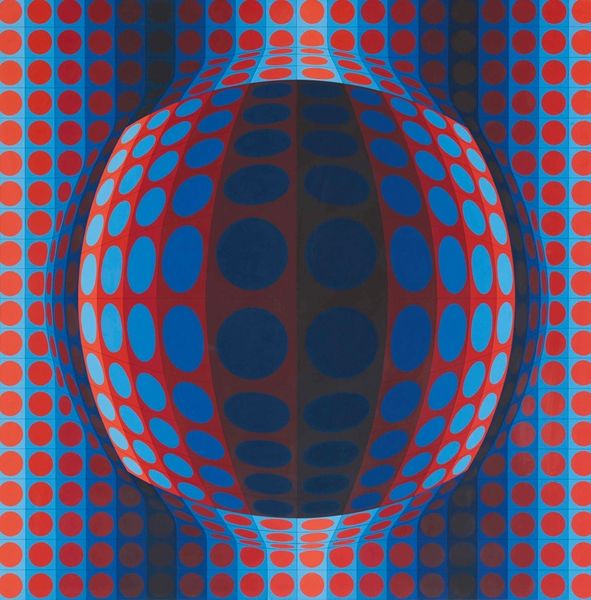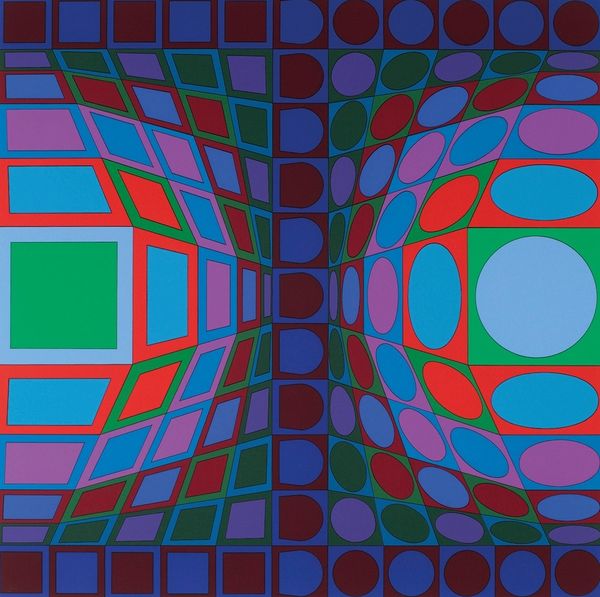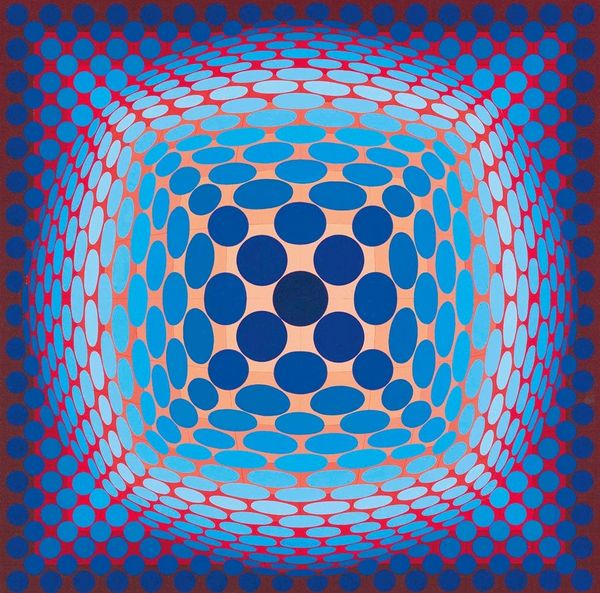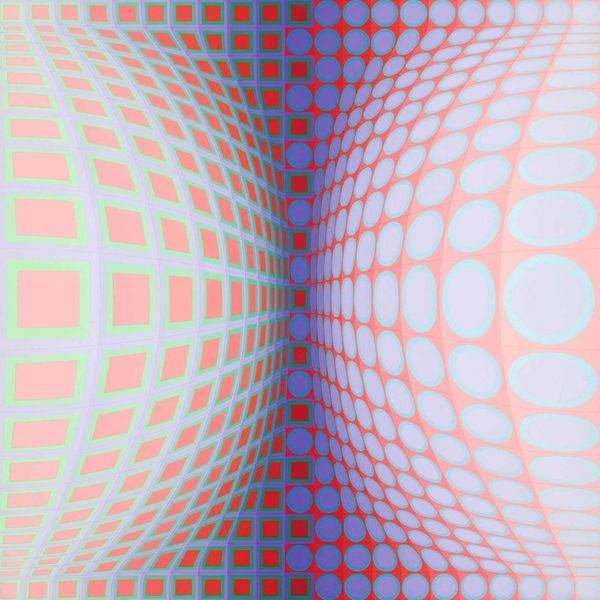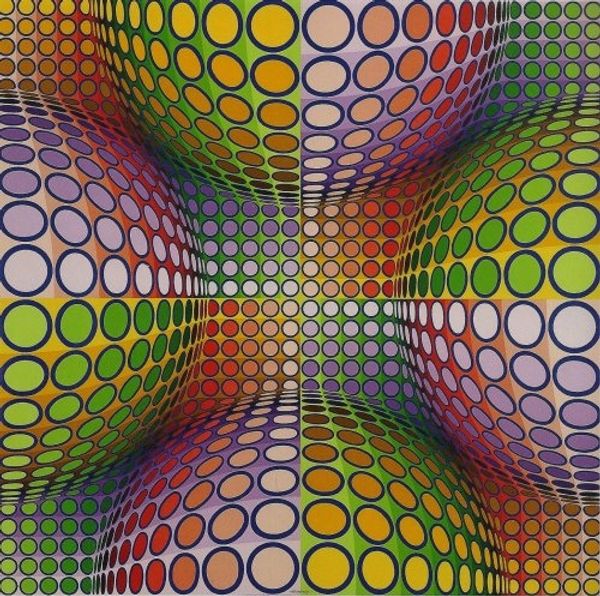
acrylic-paint
#
kinetic-art
#
op-art
#
acrylic-paint
#
abstract
#
geometric pattern
#
abstract pattern
#
repetitive shape and pattern
#
minimal pattern
#
geometric
#
repetition of pattern
#
vertical pattern
#
abstraction
#
pattern repetition
#
layered pattern
#
combined pattern
#
modernism
#
repetitive pattern
Copyright: Modern Artists: Artvee
Curator: Ah, yes, VÉGA-222 by Victor Vasarely, created in 1970. It's acrylic paint on canvas. Editor: Whoa, it feels like my eyeballs are doing yoga. Seriously, it’s like a pulsating bubble… red, green, blue... is this what a migraine looks like? Curator: That sensation is precisely the intention of Op Art. Vasarely was a leading figure. It’s all about exploiting the relationship between the human retina and the brain to create illusions. Think about the socio-political context: postwar optimism mixed with anxieties about technological advancement. Editor: It’s clever, this trickery with the eye. Makes you question what you’re actually seeing. I keep wanting to touch it, to see if it actually pops out like it looks like it does. But beyond the illusion, is there anything *more* here? Is it just a very stylish visual gimmick? Curator: The "gimmick," as you call it, is rooted in rigorous planning and process. The interplay of color and form creates an impression of movement. It also reflects the artist’s deep interest in science and technology and how mass production techniques could still produce aesthetically powerful artwork. The materials, specifically acrylic, were chosen for their consistency, their industrial vibe. Editor: I get that. It's a calculated, almost mathematical approach to painting, very different from, say, an impasto landscape. No spontaneous brushstrokes here, right? Curator: Precisely. It’s also meant to be accessible. Vasarely envisioned art for the masses. These patterns could be replicated across various surfaces and integrated into the everyday. That connects to debates on consumerism. Is it fine art, or industrial design? Does it matter? Editor: It's definitely got that space-age, optimistic vibe that feels very of-its-time. Looking at it now, though, it has this amazing retro appeal, like something from a 70s sci-fi film. Curator: Absolutely. It's fascinating how the initial impact has evolved. What began as a challenge to perception became a design trend, then an aesthetic artifact of its time. Editor: Well, whatever it is, migraine or masterpiece, it certainly sticks in your mind, doesn't it? You can't help but keep looking. Curator: It's a testament to the power of visual illusion and its complex relationship with materials, context, and production. Art designed for impact, however one may interpret it.
Comments
No comments
Be the first to comment and join the conversation on the ultimate creative platform.


